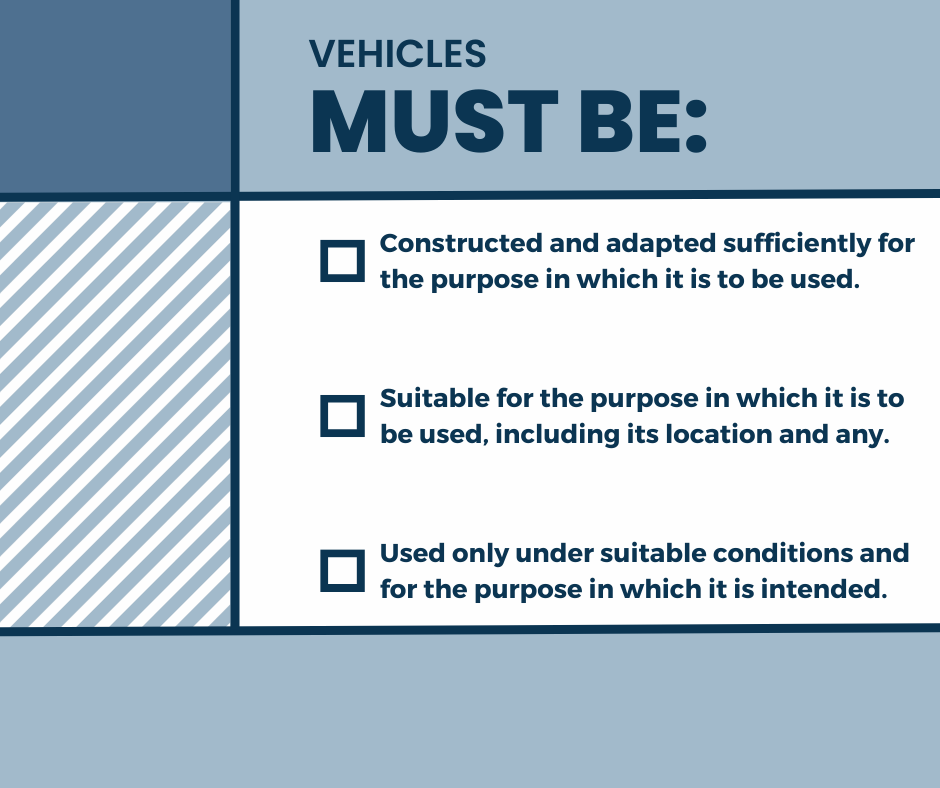Driving is one of the most dangerous work activities, with numerous potential hazards including, weather, fatigue, other road users, traffic, roadworks, vehicle condition, and lone working risks.
If your employees drive as part of their role, this must be accounted for in your health and safety arrangements. Keep reading to learn more about employer responsibilities, the role employees play, and what the law states.
What is the employer’s responsibility for employees driving to work?
 With regular daily flow of labour to and from workplaces, such as vehicles making deliveries or collections as well as persons arriving/leaving work, access and egress points can present many hazardous events. Employers have a duty to ensure that they maintain and provide a safe route of entry/exit to their facilities.
With regular daily flow of labour to and from workplaces, such as vehicles making deliveries or collections as well as persons arriving/leaving work, access and egress points can present many hazardous events. Employers have a duty to ensure that they maintain and provide a safe route of entry/exit to their facilities.
Maintenance may be affected by weather, where employers should always be ensuring a good condition of road surfaces by repairing potholes and clearing debris, in the winter months they should de-ice the road surface and pathways to prevent hazardous events occurring from icy and snowy conditions.
The flow and amount of traffic will also need to be considered, where possible reducing the risk by segregating delivery routes from normal traffic routes and providing larger spaces for larger vehicles to reduce that collision risk. They should also segregate pedestrian routes from vehicular routes with the National Safety Council reporting that pedestrians being struck by vehicles resulted in 337 work-related deaths in 2021.
Employers have much less control over private vehicles being driven to work, however they can be regulated through imposing restricted routes and access, provision of clearly displayed parking bays which can be posted away from hazardous areas (e.g., external cylinder storage cages or forklift operation areas), enforcement of speed limits or even internal policies such as always reverse parking.
How can employees stay safe while driving at work?
 Employees have a duty of care to themselves and others who may be affected by their actions, accounting for this they should ensure that they have sufficiently rested before operating any type of vehicle.
Employees have a duty of care to themselves and others who may be affected by their actions, accounting for this they should ensure that they have sufficiently rested before operating any type of vehicle.
The AA Charitable Trust conducted a study in November 2018 which showed 1 in 8 UK drivers admitted to falling asleep at the wheel, whilst a study conducted by the Nature and Science of Sleep in April 2023 suggested the risk of having a crash could be doubled if a driver has slept for less that four or five hours within a twenty-four-hour period.
Employees should also pay careful attention to the medication they take, whilst not everyone is the same, some medication can impair a person’s ability to drive, it is always best to speak to your doctor and read the label for any prescribed medication.
An employee should also raise any concerns with their employer, reporting any road traffic accidents as well as deterioration on vehicles. Including reporting where service lights or other warning lights have displayed on the dashboard.
What is the driving for work legislation?
 The Management of Health and Safety at Work Regulations 1999 states that an employer must identify anything likely to cause harm and how likely it is that a person could be harmed. To sufficiently identify and record this, a driving activity risk assessment should be undertaken and communicated to all employees.
The Management of Health and Safety at Work Regulations 1999 states that an employer must identify anything likely to cause harm and how likely it is that a person could be harmed. To sufficiently identify and record this, a driving activity risk assessment should be undertaken and communicated to all employees.
Work vehicles should also be safe, stable, efficient and roadworthy. As work equipment, they are subject to the controls of the Provision and Use of Work Equipment Regulations 1998 (PUWER) which also specifies provision, maintenance of these vehicles. Employers must also ensure that drivers are suitably trained to use that type of work vehicle, of which is also governed by The Management of Health and Safety at Work Regulations 1999.
Vehicles must be:
- Constructed and adapted sufficiently for the purpose in which it is to be used.
- Suitable for the purpose in which it is to be used, including its location
- Used only under suitable conditions and for the purpose in which it is intended.
Under the Road Traffic Act 1988 employers must also ensure that vehicles used are suitably insured, and that all vehicles have undergone and passed an MOT. With drivers also holding the correct licence, which can be verified via the DVLA’s website.
How can WA Management help?
As part of our online training shop, we offer a Driving Safely online training course which can be accessed 24/7 online via desktop or tablet.
We can also offer bespoke risk assessments to cover any type of driving activity.

Driving Safely Awareness & Mindfulness training courses are essential tools in helping to improve safety while driving. Make sure you don’t miss out on our 10% off deal on these courses, available until the end of August. Simply enter the code ‘driving10’ at checkout to save!
Read more Consultant’s blogs here.
To keep up to date with the latest health & safety news and advice, follow us on social media:
